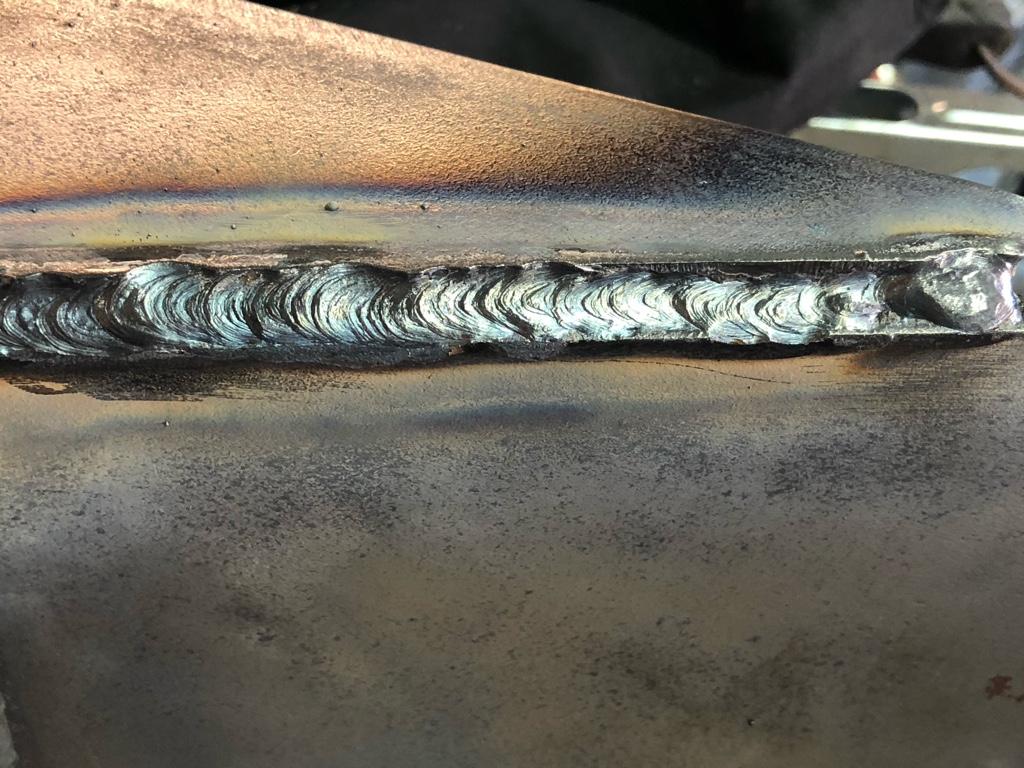Specialist Techniques for Preventing Weld Undercut Successfully
Specialist Techniques for Preventing Weld Undercut Successfully
Blog Article
A Comprehensive Guide to Identifying, Averting, and Correcting Undercut Welding Problems in Your Welding Tasks
In the realm of welding, running into undercut problems is an usual difficulty that can compromise the architectural honesty and overall high quality of your welding jobs. Recognizing the origin behind undercut welding, having the ability to accurately spot it in your welds, and carrying out efficient preventative measures are crucial skills for any welder. In addition, having the understanding and strategies to fix undercut issues when they do happen can make a considerable distinction in the final end result of your welding endeavors. Keep tuned as we check out the necessary parts of determining, protecting against, and taking care of undercut welding issues, supplying you with important insights and approaches to elevate your welding abilities to the next level.
Usual Root Causes Of Undercut Welding
Undercut welding, a typical concern in welding procedures, can be triggered by different aspects that require to be meticulously identified and resolved to guarantee the honesty of the weld joint. One of the key causes of undercut welding is too much heat input. When the welding specifications, such as voltage, current, or take a trip rate, are not correctly set, an extreme amount of heat can be generated. This excess heat results in the melting and succeeding elimination of the base product along the sides of the weld joint, creating a groove recognized as undercut.
Another typical reason of undercut welding is incorrect welding technique. Determining these root causes and applying corrective measures is vital in preventing and rectifying undercut welding troubles in welding tasks.
Identifying Undercut in Welds

To identify undercut accurately, proper illumination and magnifying tools are necessary to inspect the weld joint completely. Using tools such as a welding scale or a magnifying glass can assist in identifying even the smallest undercut imperfections. In addition, running a finger or a fingernail along the weld joint can in some cases reveal undercut, as the surface area might really feel unequal or have a more information dip where the undercut exists.
Precautionary Actions for Undercut
Having a deep understanding of the causes of undercut in welds permits for the execution of efficient precautionary measures to keep weld top quality and integrity. These settings should be optimized to protect against too much heat input, which can lead to damage formation.

Strategies for Fixing Undercut

Boosting the welding existing or reducing the traveling speed can aid fill up in the undercut. Additionally, transforming the welding technique from a push to a drag or vice versa can likewise help minimize undercut.
An additional method is to use a weaving motion while welding to ensure appropriate sidewall fusion and fill in the undercut. By oscillating the welding arc back and forth within the weld joint, the welder can deposit extra filler product right into the undercut locations, effectively eliminating the defect.
Additionally, grinding out the undercut and rewelding the joint can be a practical option for a lot more severe undercut problems - Preventing weld undercut. This process includes getting rid of the undercut area, preparing the base steel, and after that rewelding the joint with proper welding criteria and methods to avoid undercut from persisting

Professional Tips for Avoiding Undercut
Making use of proper welding strategies and keeping control our website over vital welding specifications are essential strategies for welders intending to prevent undercut in their weld joints. Furthermore, picking the appropriate welding procedure and filler steel for the particular application can help prevent undercut. Preserving a consistent travel speed throughout the welding process is an additional important pointer to protect against undercut.
Verdict
To conclude, identifying, protecting against, and repairing undercut welding problems in your welding jobs is crucial for ensuring sturdy and strong welds. Preventing weld undercut. By comprehending the typical sources of undercut, being able to recognize it in welds, carrying out safety nets, and making use of appropriate methods for fixing undercut, you can prevent potential concerns and create top notch welds. Following professional pointers for avoiding undercut can assist you boost your welding skills and create far better results in your projects
Undercut welding, a common problem in welding processes, can be triggered by different aspects that require to be meticulously recognized and dealt with to guarantee the stability of the weld joint. Furthermore, running a finger or a fingernail along the weld joint can occasionally disclose undercut, as the surface area might feel uneven or have a dip important link where the undercut exists.
Making use of correct welding strategies and keeping control over essential welding parameters are important strategies for welders intending to protect against undercut in their weld joints.In conclusion, identifying, protecting against, and fixing undercut welding troubles in your welding projects is important for guaranteeing solid and long lasting welds. By recognizing the typical reasons of undercut, being able to determine it in welds, implementing preventative actions, and making use of correct methods for fixing undercut, you can prevent prospective problems and create high-quality welds.
Report this page